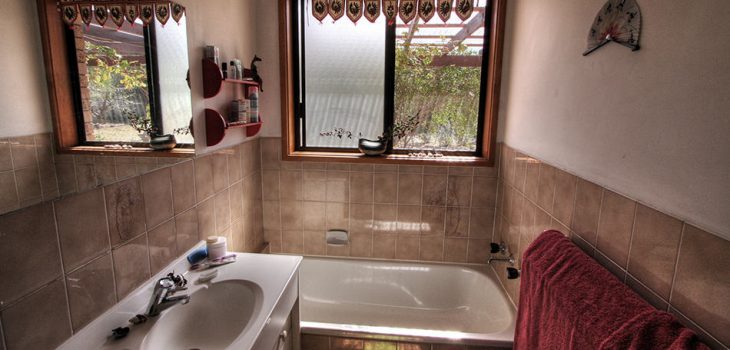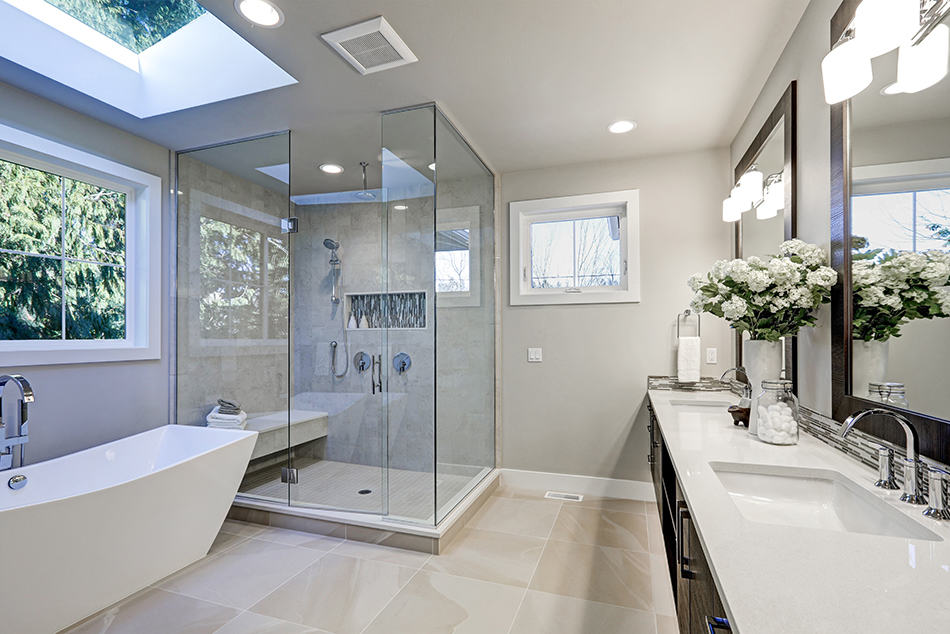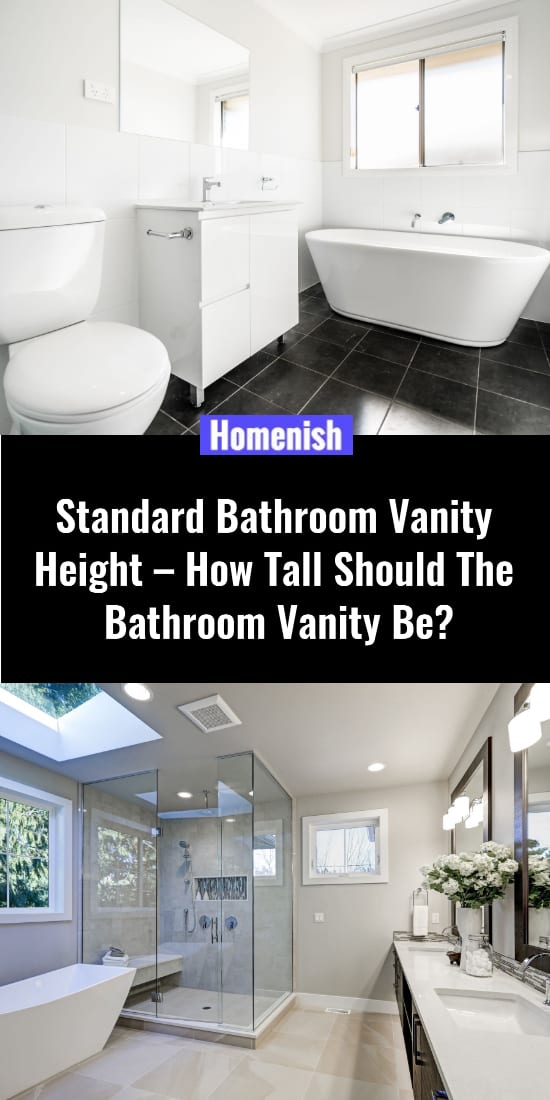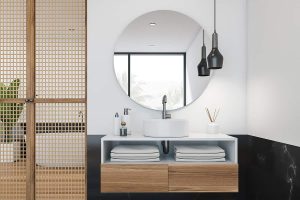A bathroom vanity is an essential piece of every bathroom’s layout. By determining the right location of your vanity, you and your family can use the unit comfortably. While the modern units are now taller than before, there are different types of vanities you can choose depending on how tall they are.
In this article, I will explain the standard bathroom vanity height including other dimensions, and how to decide on the right height so you can choose the right vanity for your bathroom.
What is a Bathroom Vanity?
Most of us have the need to store our cleaning supplies, accessories, and other beauty products in our bathroom cabinet. A vanity is a functional type of cabinet with multiple shelves, which in some cases holds the sink and almost always features mirrors.
What is the Standard Bathroom Vanity Height?
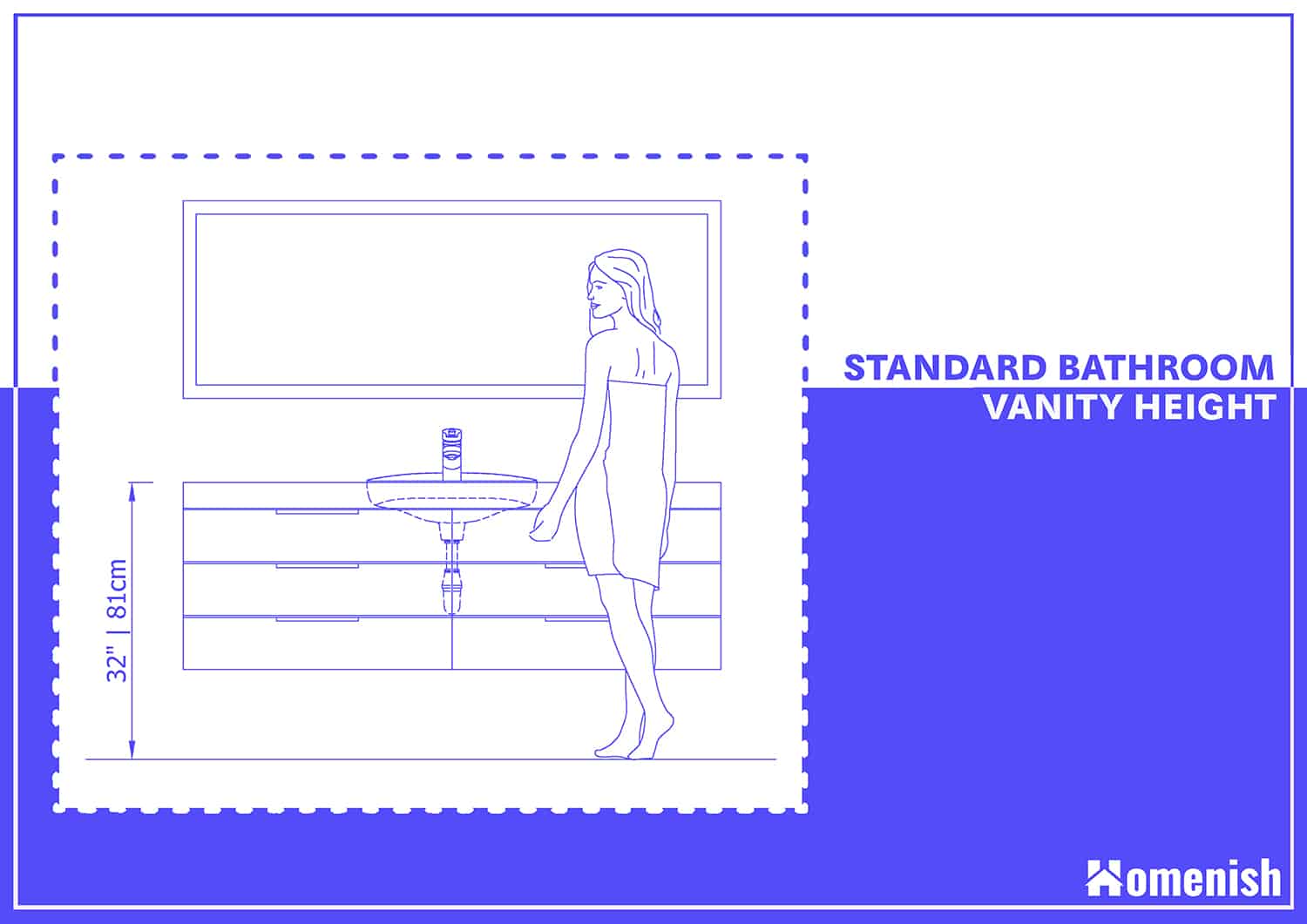
In the USA today, the standard height of a bathroom vanity is 32 inches. This number is measured from the floor to the top of the vanity sink or countertop. This means the countertop will come up to your waist, depending on your height. However, the standard height is now increasingly becoming replaced by the newer 36-inch vanities – perhaps because people are getting taller?
Still, the standard height of 32 inches has its advantages, with the biggest one being that it is a great option for families with small children. For example, if you and your partner are tall, you’ll both be able to use the standard height vanity and so will your children.
Standard height vanities are also good options for hotels and similar publicly accessible places as the height of people isn’t predicted, thus facilitating ease of use.
As I previously mentioned, in households with varying heights, the standard height bathroom is an ideal option for the whole family.
What is the Height of Comfort Bathroom Vanity?
The newer bathroom vanities that have emerged in the market now have a standard height of 36 inches, which makes them 4 inches taller than the old-style standard vanities.
The latest-edition comfort vanities are ergonomically made with the user’s health and comfort as their main focus. Unlike the old vanity style that you had to bend in order to use, the newer models have made it ultra-easy as you won’t be stooping to look at yourself in the mirror or wash your face.
If you are a medium to tall person, you will find the comfort height vanity much more comfortable compared to the standard 32-inches vanities. However, if you have children, they won’t find it a good option. Shorter people, on the other hand, should stick with the 32-inch vanity.
What is the Standard Height of Freestanding Bathroom Vanity?
The freestanding vanity is sometimes referred to as vessel sink vanity. The sink of this unit sits on top of the vanity’s countertop. Unlike the normal bathroom vanity designs, the sink is not built into the vanity so the height differs.
Both the standard height of the sink and the vanity must be considered in order to calculate the total height. After all, the vessel sink can add up quite a few inches to the entire unit’s height so it’s important to take these into account before buying a vanity for your bathroom.
To give you an idea, a standard vanity with an 8-inch high vessel sink is between 22 and 36 inches. To choose the right height, find out who in your household is the shortest and the tallest. If you have a disabled family member, it’s best to choose a vanity height of between 21 and 26 inches with a vessel sink that’s 8 inches tall.
What is the Standard Height of Floating Wall Hung Vanity?
Just like the vessel sink vanity cabinets, the standard height of floating wall vanities are also around 32-inches. But you can nowadays find new wall-hung vanity units that are as tall as 36 inches from the floor to the countertop.
Based on the ADA specifications (Americans with Disabilities Act) the floating wall hung vanity must be between 29 to 34 inches. This is why you will often find such cabinets with the specified height in hotels and other public places. Having said that, you can always opt for taller or shorter vanities depending on the height of your family members.
How to Choose the Right Vanity Height
When measuring your bathroom space for a vanity, consider the following points:
- Installing the sink: when measuring for the sink, you need to take into account the height of the countertop, which normally comes at 34 inches. For the above countertop vessel sinks, the measurement can be even higher. In this case, you’ll need a lower cabinet.
- The mirrors: the same goes for the mirrors. Their height is based on yours as the idea is, the mirror should be at your eye level. In general, 5 or 6-inch mirrors are acceptable for standard height vanities. However, you must first determine the heights of your family before choosing the mirrors.
- Room for customization: once you’ve decided the height of your mirrors and sink, you can then decide exactly where your vanity will be installed. In older bathrooms, power plugs and plumbing may already be installed so you might need to move them before installing the vanity. But to make things easier, try to find a unit that doesn’t require the rerouting of plumbing or wiring as this would make the installation process hassle-free.
- Traffic flow: when choosing the location of your vanity, consider the traffic flow to your bathroom. After all, you wouldn’t want the vanity to be obstructing the way for the elder members of the family or the younger ones when they need access to the other units of the bathroom.
- Existing features: just like plumbing, moving the other fixtures such as the lights or outlets can be expensive so before installing your vanity, be sure to measure its distance from the power outlets, the plumbing, and the lights.
Choosing the ideal vanity height can vary from person to person depending on how tall they are. With this in mind, you have the option of choosing bathroom vanities that range from 29 to 36 inches in height. I suggest you take into account the needs of each and every member of your family who is going to use the bathroom. Make a draft calculation of their height before making the decision on the most suitable vanity.
With a range of different options available from 32-inch vanities to comfort height vanities of 36 inches, you’re sure to find the right unit for your family’s needs.
How About Other Dimensions: Width and Depth?
So we’ve covered the height of bathroom vanities, but why leave the width and depth out? Here is a quick look at the standard widths and depths of vanities:
The most common widths start from 24 and go up to 72 inches. Most single vanities are between 24 and 48 inches, while the double vanities are between 60 and 72 inches wide.
However, in recent years, double sink vanities with widths of 54 inches have gained popularity as they can easily fit compact bathrooms. These are ideal for people who don’t have the space to install a 60-inch or wider vanity.
Bear in mind that the countertop of the vanity will always be at least one or two inches wider than the cabinets so when measuring the width, it’s best to start from the countertop and not the cabinets.
Next is the depth. The standard vanity depth is 21 inches, but you can find designs that range from 17 to 24 inches in depth. If your bathroom is small, you should opt for the narrower vanities that offer sufficient storage as well as allow foot traffic.
How To Extend Bathroom Vanity Dimensions
- If you are an expert DIYer, you can extend your existing vanity dimensions. How? Simply remove the existing countertop, add a new frame with drawers on top to extend its width.
- To increase the height of your bathroom vanity, simply add adjustable legs to the cabinets. Just make sure the new legs are sturdy enough to support the weight. The construction stability is especially important if you intend on adding more frames, screws, and other features to the vanity.
- The other simple way of improving your vanity height is to add a wood foundation to the bottom of the unit. Attach the foundation to the floor with a few screws to make it extra stable. It’s as easy as that!
- When measuring the vanity, don’t forget to take into account any plumbing or wiring changes you need to make prior to the installation. After all, you don’t want to have your sink too close to the faucet!
- If you have the skills and tools, you can build a custom bathroom vanity. A DIY vanity will save you money and fit perfectly with your family’s needs. Watch this quick video to find out how to build a wall-mounted vanity: https://www.youtube.com/watch?v=mZ8_y3T00ZA.
